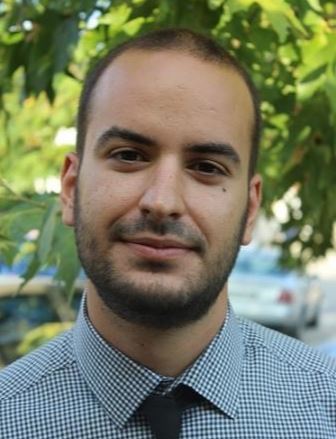ion concentration polarization - focusing, separation, extraction and particle porosity differentiation
Vasileios Papadimitriou is a PhD student in the research group Biomedical and Environmental Sensorsystems. His supervisor is prof.dr. J.C.T. Eijkel from the faculty of Electrical Engineering, Mathematics and Computer Science.
 Cardiovascular diseases (CVD) remain the number one cause of death around the world. In contrast to other deadly diseases (e.g. cancer), early diagnosis and treatment of CVD could drastically reduce their mortality rates. Hence a need for a point-of-care device for early diagnosis of CVD exists. The goal of this dissertation is to use ion concentration polarization to focus, separate and extract CVD biomarkers (proteins) out of blood.
Cardiovascular diseases (CVD) remain the number one cause of death around the world. In contrast to other deadly diseases (e.g. cancer), early diagnosis and treatment of CVD could drastically reduce their mortality rates. Hence a need for a point-of-care device for early diagnosis of CVD exists. The goal of this dissertation is to use ion concentration polarization to focus, separate and extract CVD biomarkers (proteins) out of blood.
Ion concentration polarization is a electrokinetic phenomenon that occurs close to an ion perm-selective material, typically a membrane, when an electric field is applied across it. Due to the flux imbalance between anions and cations through the membrane one side of the membrane becomes depleted of all charged species and the other side becomes enriched, resulting in a concentration polarization across the membrane. The concentration gradient close to the depleted side creates an electric field gradient which is necessary for electrophoretic separation and concentration techniques.
In this thesis we suggest a method for patterning such ion perm-selective membranes using capillary forces and we propose the use of ion concentration polarization phenomenon for the characterization of microparticle porosity. In addition, we demonstrate the selective extraction of concentrated analytes with three different ways: i)Continuous low throughput extraction via pressure application ii) Continuous high throughput extraction via a free flow variant of ion concentration polarization focusing iii)Continuous or on-demand droplet extraction. Finally we suggest that monitoring the electric current in combination with local microchannel width variations can be used as method for automated label free operation of ion concentration polarization focusing.





